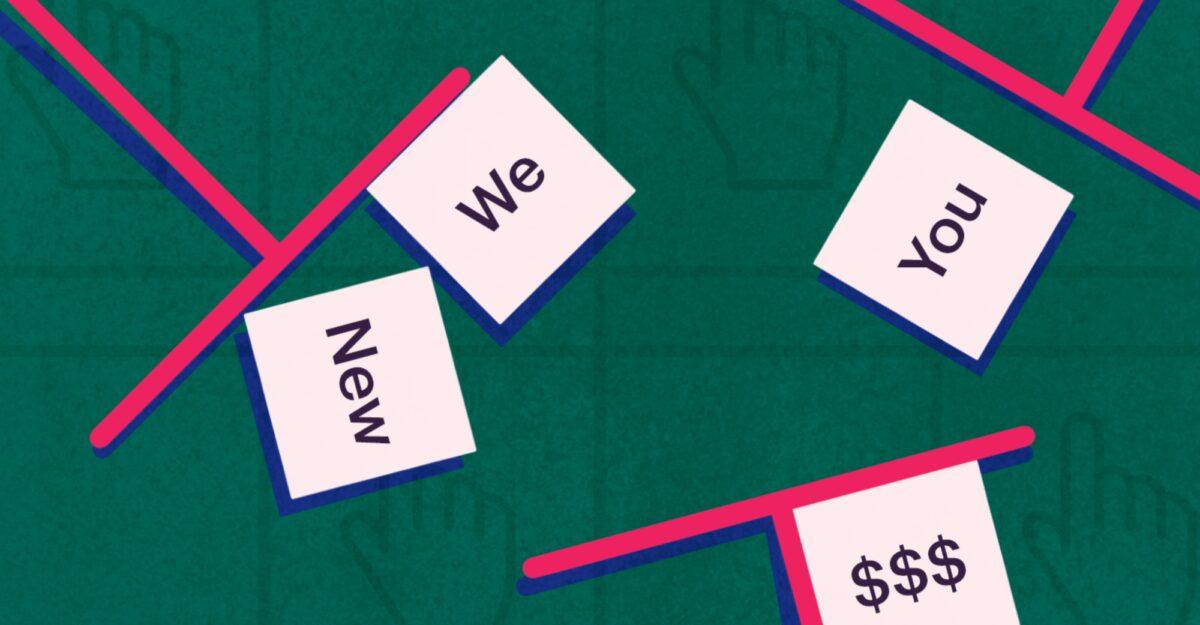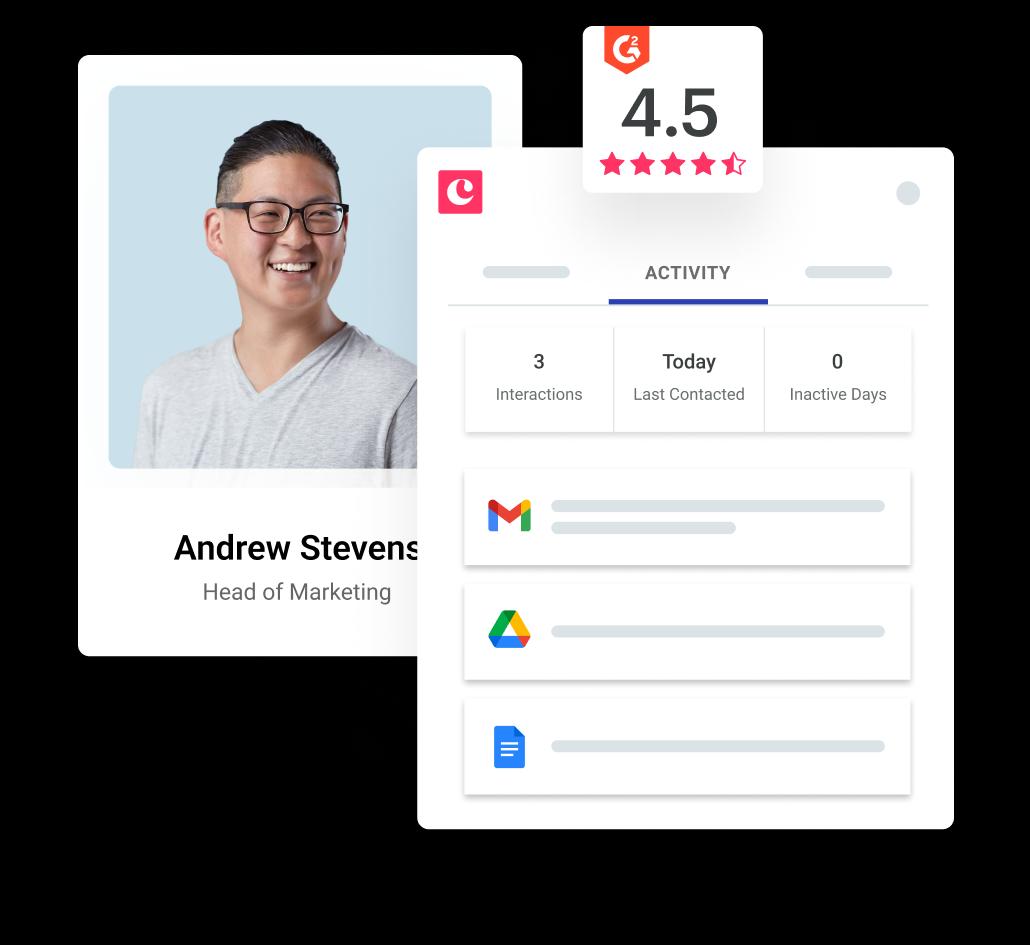
Carrie Shaw
Chief Marketing Officer
There’s a lot you can accomplish with an email newsletter: stay top-of-mind with prospects, upsell current customers, reconnect with old clients, the list goes on...
And as long as you have something worth sharing—like interesting blog posts, new products, and company announcements—newsletter subscribers will (usually) be happy to hear from you.
But just because it’s easy to find a reason to reach out doesn’t mean your subscribers will automatically open whatever you send them. Just look at this inbox overflowing with newsletters:
It’s kind of hard to focus, right?
Sure, there are a few elements in these newsletter subject lines that stand out. There’s the fire emoji in Dollar Flight Club’s subject line, and ContentWriters uses square brackets.
But are those the only ways to get subscribers to pay attention to your subject lines? (Nope, definitely not.)
In this post, we’ll explore 11 tips on how to write click-worthy newsletter subject lines:
- Tell them exactly what they get inside
- Make it about them, not you
- Use title or sentence case
- Make your message stronger with the right words
- Don’t use spammy words
- Watch for length
- Use numbers when you can quantify the message
- Use brackets to show off special content
- Add (recognizable) emojis
- Don’t forget about preview text
- Be careful with email subject line formulas
1. Tell them exactly what they get inside
There’s nothing wrong with using a simple subject line as long, as it clearly conveys what the subscriber will find inside.
You might be wondering why you can’t just use a clickbait-y subject line instead. After all, who doesn’t love a good mystery ending? This subject line from Swagbucks is sure to get a lot of opens, right?
The only thing is, if you send this same subject line over and over again to people, you'll suck the novelty and intrigue right out of it.
(Plus, in this case the email itself isn’t very valuable—it’s just a call to users to return to the app and take longer surveys.)
You want to motivate your subscribers to do something that will benefit both them and you. But if you use a subject line tactic that tricks them into doing something that only benefits you, they’re going to be annoyed that they wasted their time on the email (and then probably unsubscribe from your list altogether).
That said, these super-mysterious and vague subject lines can work—provided that they're explained once someone opens and reads your email (copywriters sometimes call this the "payoff"), and that you don't overuse them.
Bottom line? Don’t confuse. Don’t mislead. Don’t bait-and-switch them. You need subscribers to open your emails, click on the links, and stay subscribed because they liked it or found it useful.
On that note, clear and straightforward subject lines might seem boring, but they can easily be jazzed up with more emotional language and a little punctuation.
Petfinder does a good job of this:
This is a recurring newsletter that subscribers receive whenever their search queries get a match.
It could easily have said:
“New dog matches”
But Petfinder knows their audience: pet lovers who are actively searching for a new dog will be excited to see this kind of message in their inbox. Why not mirror their excitement with your own equally excited subject line?

Pro-tip
Write better emails.
Learn how to write emails that make people take action with this series of email tips delivered straight to your inbox.
2. Make it about them, not you
One thing that businesses love doing when writing subject lines is to put their company names in them.
Your subscribers should already see your name in the “From” field. There’s no reason to repeat it, especially when you have a limited word count to capture their attention. (Also, it's a little self-centered, no?)
Here’s an opportunity that CheapOair wasted by putting their name in the subject line:
What they could’ve done instead was write something like:
“Fly to Boston for As Low As $119!”
That would’ve probably been more effective in convincing subscribers to open the message and learn more about the deal. The way it’s written now just sounds like a self-serving “look at us!” promotion.
The "me me me" aspect of subject lines
Now, let’s say that the content inside the email uses first person: “I” and “us” and “we.” Even if that’s the case (and it’s justified in some situations), try to make the subject line about your subscribers.
Pro-tip: Involve your reader as opposed to talking about yourself.
Here’s how Zapier handles it:
This email promotes a Zapier blog post—written in the first person:
Yet, the subject line turned it around and featured the reader.
That’s not to say you should never use “we” or “I” in your subject lines. Just make sure you have a good reason for bringing yourself into it (like helping your readers learn from your mistakes).
In the case of this Zapier post, one way to do that would be:
“We’re bad at estimating time, but you don’t have to be."
3. Use title or sentence case based on the context
If you look at your own inbox, you’ll notice that subject lines are sometimes written in title case (the first letter of almost every word is capitalized, as in "How to Write Better Emails") and other times in sentence case (only the first letter of the first word is capitalized, as in "How to write better emails").
Some research points to title case being more effective. Yesware, for instance, analyzed 115 million emails and found:
Title case performed better than average in both open and reply rates.
The CoSchedule Email Subject Line Tester also favors title case when rating subject lines:
That said, some people believe that there’s a stronger case for sentence case, as TechCrunch’s editor-in-chief argues. HIP B2B also found a growing trend in favor of sentence case. I personally use either one, depending on the situation.
In reality, it’s probably okay to use either sentence case or title case. Just stay clear of all caps or all lowercase. Using ALL CAPS just makes it sound like you're shouting, while all lowercase might just be too unconventional at this point.
(Disclaimer: I don't have strong feelings about lowercase subject lines, but either way, if you really want to use all caps or all lowercase, just test them first to see how they do.)
As for deciding which of the two winning options to go with, it’s probably best to write your subject lines in a style that mirrors the content of your newsletter.
For example, The HOTH uses this subject line to promote a new blog post it published (by the same name):
If you’re promoting a piece of content and you’re using the title as your subject line, keep it consistent and stick to title case.
On the other hand, if you’re sending a message to remind or invite subscribers to do something, it might make more sense to write it in sentence case, as Bank of America does:
This way, it doesn’t feel as heavy or formal and sounds a little friendlier, like “Bank of America is telling me I can make money if I open this email. Cool!”
4. Make a stronger subject line with the right words
This is a tricky one to nail down—you have an infinite library of words to choose from when you’re writing a subject line.
That said, when it comes to finding the right words—or, at the very least, one really powerful word that convinces subscribers to open—there’s research that can shed some light on this.
To start, Campaign Monitor found that these words, when placed in the first and last spots of a subject line, led to more opens:
The “word” that’s proven the most effective based on Campaign Monitor’s data is... actually a personalization.
It would look like this subject line from Liberty Mutual, where it directly addresses the subscriber:
There are other reports, like the one from Smart Insights, that break up these lists into categories. This, for instance, is the list of the top five emotion-provoking words:
Notice how “introducing” landed one of the top spots on these two reports.
Then, you have CoSchedule’s Email Subject Line Test, which helps marketers improve their opening lines. Scroll down to the analysis section of this tool and you’ll find a list of power words CoSchedule looks for when you submit a subject line:
If you’re looking for a way to strengthen your newsletter subject lines, these three data sets can be a good starting point to identify the kinds of words that make sense for your subscribers. Finding words that overlap is your best bet.
One other thing: don’t just assume that all the words on these lists are up for grabs.
For instance, if you’re in the business of selling household goods, it would make sense to use words like “back in stock,” “% off,” and “get your.” For an accounting firm, though, those power words would make no sense at all.
Find the power words that will resonate with your audience and relate to the content within your email.
5. Don’t use spammy words
Just as you’re looking for eye-catching words to add to your subject lines, you need to familiarize yourself with words that are likely to get your messages ignored—or, worse, flagged as spam.
Conveniently, CoSchedule also has a word bank for this. Funny enough, "introducing" is on this list too, which is just beyond confusing because it was on the list of recommended words by other sources above...
Basically, this just goes to show yet again that there is no foolproof formula for writing subject lines (and don't trust anyone who promises you that they have one). Try things out, A/B test, and use your own best judgment.
There are other lists of spam-trigger words out there, too, like this one from Prospect.io:
Look at enough of these lists and you’ll notice some trends.
What you’ll find with some of the words is that they over-exaggerate: “Can’t live without,” “Big bucks,” “100% free.”
Others focus too much on getting a payment: “Accept credit cards,” “Billing address,” “Apply now.”
Then there are some words that just scream “scam” like “Be your own boss” and “Amazing stuff.”
Pro-tip: Write newsletter subject lines in the same voice you’d use to talk to people in person or over the phone. If it sounds unnatural or too good to be true, they’ll sense it in an instant.
6. Watch for length
Email providers are all a little different when it comes to how many characters they display in a subject line.
Not only that, the screen size and orientation (landscape vs. portrait) also affect how much of your subject line subscribers can see.
Marketo did a study on this in 2018 and found that the sweet spot is seven words, or roughly 40 characters. Here’s how they came to that conclusion:
This is out of a sample size of 100,000 emails.
What’s interesting to note is that the seven-word subject lines don’t have the highest open rates. What they do have, however, is the highest click-to-open rates.
The click-to-open (CTO) rate is calculated by dividing the number of clicks by the number of people who opened the newsletter.
This is the most important statistic to pay attention to because it tells you how well your subject line sets the stage for the newsletter and how well your newsletter content convinces people to convert.
Let's check out the data.
Look at the 4-word subject line column. 100,000 people received the 4-word subject line and 18,260 opened it. However, of those 18,260 people, only 1,461 took action. So, even though this subject line convinced more people to open the email, it failed to convince them to convert.
In comparison, the 7-word subject lines had a lower open rate, but more people clicked! Which one would you rather have?
This is why you can’t just focus on the open rate.
7. Use numbers when you can quantify the message
In most of the points above, the focus is on the words in a subject line. But what about numbers?
It’s not easy convincing someone to read a message or a piece of content. Everyone is short on time and attention these days.
If your newsletter offers something quantifiable, though, you could use that number to set expectations right in the subject line, as Freelancers Union does:
The subject line is a bit lengthy, but it works well in this case. The first part (before the colon) is an attractive promise, offering readers a solution to the 10-hour days they work in order to pay the bills. But it doesn’t stop there.
The second part of the subject line tells you how many tips you're going to get to help with this problem.
There are other ways to use numbers to convince subscribers to open your emails.
For instance, your newsletter might be promoting a new productivity app. But rather than write the subject line like this: “How to use the Time Saver 2.0 to take back your workday,” try writing it like this:
“Want to work a 20-hour week? This app might be the solution.”
You could also use a percentage to demonstrate the power of what the email contains. For instance:
“Did you know that optimized images can improve your conversion rate by 33%?”
Or you could even use the year to capture their attention:
“Download the 2019 Small Business Report”
In whatever form they take, numbers provide more specific clues to subscribers about what emails contain. They also help your newsletter subject line stand out from ones written only with words.
8. Use brackets to show off special content
Readers are used to seeing parentheses “( )” in content—they signal that there’s additional information or a “bonus” thought.
But square brackets? The more rigid counterpart of parentheses isn’t often seen in content writing, which makes it a little more more eye-catching when it shows up in a subject line.
That said, brackets shouldn’t be used the way you use parentheses. Instead, they should be used to frame special content.
For instance, ContentWriters puts “White Paper” between brackets:
Let’s face it: it can get old reading blog post after blog post. There’s nothing wrong with sharing valuable content in your newsletter, but it would be a nice surprise to change things up for your subscribers.
When you have something new and super valuable to share—a white paper, case study, video report—call it out in your subject line. Generally, it's placed in either the first or last position. For example, another way to write the subject line above would be:
“How to Get Backlinks without Begging: 11 Strategies [White Paper]”
The words that appear in the middle are often the ones that get skimmed over, so be sure to place the critical elements at the start or end of the subject line.
9. Add (recognizable) emojis
With the widespread use of emojis in our personal lives, it was only a matter of time before businesses began to use them as well. And, according to the Nielsen Norman Group, there’s a good reason to use emojis in subject lines:
“These little pictographs are now commonly used in subject lines to draw attention, add context, and bring emotion to a message in the inbox.”
Just be careful. Not every brand can use the 🍆 emoji and get away with it.If you're like most brands, you'll want to stick to recognizable and professional-looking emojis.
Dollar Flight Club has a good example of how to use the fire emoji to draw subscribers into the hot deals inside:
The Art of Living Foundation uses an emoji that works well in terms of relevance:
The only problem is that this might not be an emoji that everyone can recognize or even see clearly.
While it does make the subject line stand out from the sea of messages in an inbox, you want the emoji to be easy to understand—not confusing.
10. Don’t forget about preview text
As you might already know, email users can configure their inbox to show either subject lines or subject lines with snippet previews.
You can’t possibly know which one your subscribers use, so it’s a good idea to write a subject line and snippet preview for each message you send.
Here’s the Nielsen Norman Group’s advice on using preview text:
“The preheader is a useful way to give users valuable information right in the inbox. Unfortunately, many organizations squander this opportunity by using subject lines that are too long, or by placing uninformative text at the top of the message (for example, 'Having trouble viewing this email? Click here').”
The first takeaway is to keep your newsletter subject lines relatively short (which you already know). The second is that you need to take advantage of this extra space.
Here’s a subject line from Hulu that’s a mixed bag:
The subject line is great. Of course the answer to that is going to be “Yes.” However, for those who can see the snippet, it’s clear that Hulu didn’t take that much time to write it, except for maybe the first sentence.
The Citizenry, on the other hand, has put a little more thought into what belongs in the snippet:
The subject line itself is promising, but the snippet text takes it to the next level by explaining how much early access there is and what subscribers get when they take advantage of it.
As you look for ways to improve your subject lines, you can’t afford to forget about this piece. It might not officially be a “subject line,” but you want to make it count all the same.
11. Be careful with email subject line formulas
The tips above will give you a good baseline for writing click-worthy email subject lines. That said, it never hurts to experiment and see if a different approach works well with your subscribers.
There are a ton of subject line “formulas" out there that are a great starting point for when you're brainstorming new lines to try—but be careful how you use them.
In all honesty, some of them do work. Tips #7 through 9 on our list (Numbers, Brackets, Emoji) are types of formulas that email marketers often use to get more eyeballs on their messages.
There are other formulas likely to increase open rates, too. You’ll often find that the seven deadly sins are at the root of them. For instance:
- Social proof (envy): “Company A saved $500 on office supplies with this app!”
- Big mistake (pride): “The #1 mistake all small business owners make (and what to do about it)”
- FOMO (greed): “Miss Michelle Obama’s speech at Conference Z? Get the live recording now.”
Others, though, can backfire on you.
For example, this is The North Face’s attempt at using a vague subject line to pique curiosity:
It says absolutely nothing about what the message holds—which is part of the strategy. But even if it gets you an astonishing 60% open rate, would all these people who opened the email be disappointed and not click your CTA because the message inside doesn't align with the subject line?
That's always going to be a consideration.
Pro-tip: If your newsletters aren't making people take action, then your open rate is nothing more than a vanity metric.
For a brand like The North Face, this could work. I’ve worked at previous SaaS businesses where the infamous “Oops” subject line got a whopping ~50% open rate.
If you’re a newer business, though, it could leave subscribers feeling wary about what that email could possibly hold in store for them. The best advice I can give you is to A/B test it and see how it does.
If you want to try a safer approach to this curiosity formula, you could try something like:
“Summer sure went fast! Which means... Labor Day discounts!”
This way, the subject line still retains a sense of urgency (because Labor Day discounts don’t last long) to increase opens. But in terms of intrigue, you do lose quite a bit here.
Bottom line: before using clickbait subject lines, run through the steps above and make sure you’re still abiding by the general rules of good subject line writing.
Start writing newsletter subject lines that get clicks.
It takes a lot of time to put together content for your marketing strategy. That’s part of the reason why you write a newsletter in the first place—to ensure that your marketing efforts get in front of the right people.
But you have to be careful about how you write your newsletter subject lines. They might seem insignificant (especially if they’re just a handful of words), but they have the power to increase or decrease your open rate.
What’s more, if they incorrectly set subscribers up for the content of the newsletter, they can also affect your click rates, too.
So, don’t go into this lightly. Use the checklist above to write your newsletter subject lines and make the most of this marketing opportunity.










